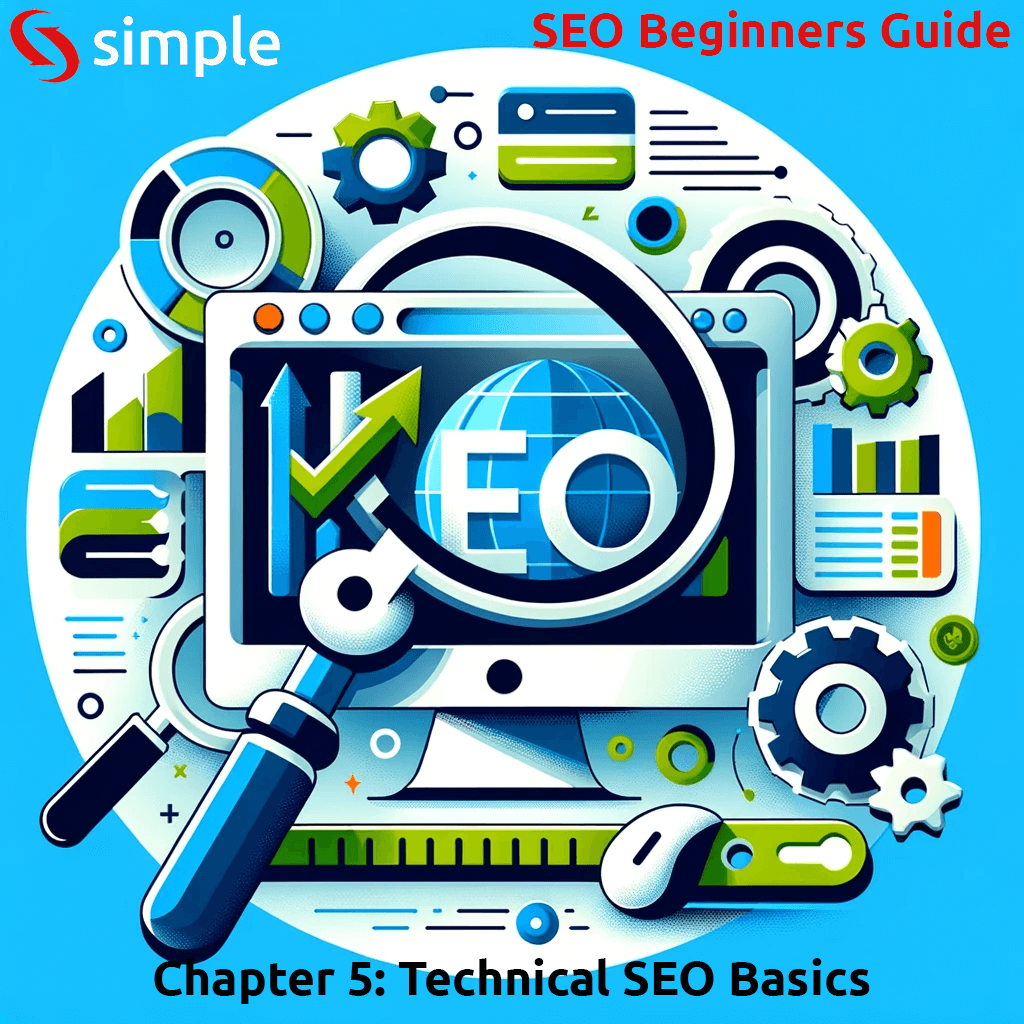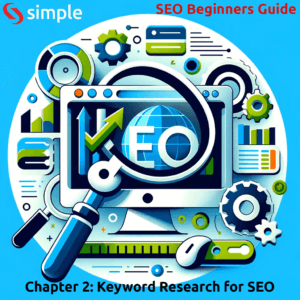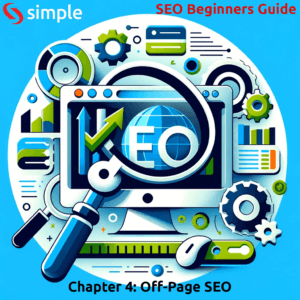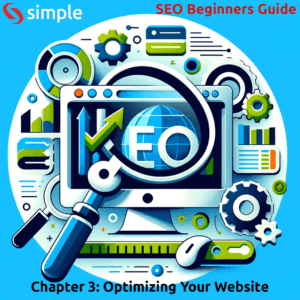In the world of SEO, technical aspects are often overlooked, yet they form the backbone of an effective strategy. In this guide, part of our SEO Beginners Guide, we’ll explore the basics of technical SEO, focusing on site speed, mobile optimization, and website security.
Technical SEO Basics
1. Site Speed
Improving site speed is essential for both enhancing user experience and improving SEO performance. Here are some practical tips:
- Optimize Images: Large images can significantly slow down your website. You should compress images and use appropriate file formats. For instance, JPEG is generally better for photographs, while PNGs are better for graphics with fewer colors. Tools like TinyPNG or ImageOptim can help compress your images without losing quality.
- Use a Content Delivery Network (CDN): CDNs distribute your content across multiple servers around the world. This means that when someone visits your site, they download files from the server closest to them, speeding up the process. Popular CDNs include Cloudflare and Amazon CloudFront.
- Minimize HTTP Requests: Reduce the number of elements on your page to minimize the number of HTTP requests required for the page to load. This can include combining scripts, stylesheets, and using CSS instead of images whenever possible.
- Enable Browser Caching: When you enable caching, repeat visitors will be able to load your site faster since their browser can load parts of your site from their local drive rather than from the server.
- Optimize CSS and JavaScript: Minifying and combining files can help reduce the size and number of CSS and JavaScript files. Tools like CSS Minifier and JavaScript Minifier can be useful for this.
- Avoid Blocking JavaScript and CSS in Above-The-Fold Content: Ensure that your CSS and JavaScript are not hindering the loading of content that appears on the screen when a user first visits your site.
- Use Asynchronous Loading for CSS and JavaScript Files: Asynchronous loading allows multiple files to load simultaneously rather than one at a time, thus speeding up the page load time.
- Optimize Server Response Time: Your server response time is affected by the amount of traffic you receive, the resources each page uses, the software your server uses, and the hosting solution you use. Regularly monitor and improve your server’s performance for better response times.
- Use a Faster Hosting Solution: If your hosting service is slow, all other optimization efforts can only do so much. Consider upgrading to a more robust hosting solution if necessary.
- Implement AMP (Accelerated Mobile Pages): If a significant portion of your traffic comes from mobile devices, consider implementing AMP for mobile pages. AMP is a Google-backed project designed to speed up the loading of pages on mobile devices.
- Reduce Redirects: Each time a page redirects to another page, your visitor faces additional time waiting for the HTTP request-response cycle to complete.
- Optimize the Render Path: Analyze and optimize critical rendering paths to improve load times. Tools like Google’s PageSpeed Insights can provide insights into how you can do this.
For further information and to implement these strategies effectively, consider consulting detailed resources and guides available on Google’s PageSpeed Insights, Moz, and other SEO-focused websites. Remember, improving site speed is an ongoing process that requires regular monitoring and adjustment.
2. Mobile SEO
- Why It Matters: With the increasing prevalence of mobile devices, having a mobile-friendly website is a must. Mobile SEO ensures that your site provides an optimal experience on mobile devices.
- Best Practices: Implement responsive design, ensure fast loading times on mobile, and make navigation easy for touch screens.
3. Secure Websites (HTTPS)
- Security: Implementing HTTPS is no longer optional. It encrypts data between the user’s browser and your website, ensuring that sensitive information like credit card details is secure.
- How to Implement: Obtain an SSL certificate from authorities like GeoTrust, RapidSSL, or Comodo SSL.
4. Internal and External Linking
- Role in SEO: Links help search engines understand the context and importance of a page, improving crawling, indexing, and ranking.
- Quality Backlinks: Focus on gaining high-quality backlinks as they act as endorsements for your site, but be wary of links from low-quality sources.
5. Content Clusters
The concept of content clusters is very important in technical SEO, also known as topic clusters, is becoming increasingly important in SEO and content strategy. It revolves around the creation of a comprehensive content ecosystem that’s centered around a broad topic (known as a “pillar” topic) and more specific, related subtopics.
What are Content Clusters?
- Pillar Content: This is a comprehensive piece of content on a broad topic. For example, if your website focuses on fitness, a pillar page might broadly cover “Workout Routines.”
- Cluster Content: These are pieces of content that address specific questions, subtopics, or keywords related to the pillar topic. Following the fitness example, cluster content might include articles like “15-Minute Home Workout Routines,” “Cardio Workouts for Beginners,” or “Strength Training Basics.”
- Hyperlinking Structure: In a content cluster, the pillar page and each of the cluster content pieces are interlinked. The pillar page links to each cluster content piece, and each cluster content piece links back to the pillar page.
Why are Content Clusters Important?
- Improved User Experience: This approach makes it easier for users to find information on your site, as all related topics are interlinked.
- Boost SEO: Content clusters help search engines understand the relationship between different pages, improving your site’s SEO. By providing comprehensive coverage of a topic, you can demonstrate authority, which can lead to better rankings.
- Focus on Topics, Not Just Keywords: While keywords are still important, the focus on broader topics aligns better with how people search and engage with content today.
How to Create Content Clusters
- Identify Pillar Topics: Choose broad topics that are central to your brand or industry.
- Conduct Keyword Research: Identify subtopics and keywords that are related to your pillar topics.
- Create and Optimize Pillar Content: Develop comprehensive, authoritative content around your pillar topics.
- Develop Cluster Content: Write content for each subtopic, focusing on depth and relevance.
- Internal Linking: Link each piece of cluster content to the pillar page and vice versa.
Best Practices
- Consistent Updating: Keep your pillar and cluster content updated with the latest information.
- Quality Over Quantity: Focus on creating high-quality, valuable content that addresses the needs and questions of your audience.
- Analyze and Adjust: Use analytics to track the performance of your content clusters and make adjustments as needed.
Content clusters not only help in organizing your website’s content logically but also enhance the overall authority and trustworthiness of your site in the eyes of both users and search engines.
For more detailed information on implementing content clusters in your SEO strategy, consider exploring resources such as HubSpot, which has been a pioneer in using and advocating for this approach. Additionally, SEO-focused platforms like Moz and SEMrush offer insights and tools that can further aid in developing an effective content cluster strategy.
6. Clickability and User Experience
- Factors for Improvement: Enhance click-through rates by optimizing meta titles and descriptions, and using structured data to stand out in search results.
7. Technical SEO Quick Wins
- Indexing and Redirects: Regularly check if your important pages are indexed and fix any crawl errors. Use 301 redirects to reclaim the value of old URLs with backlinks.
8. Schema Markup
- Benefit: Helps search engines understand and display your content effectively, potentially leading to better visibility in search results.
9. Addressing Thin and Duplicate Content
- Solution: Use tools like Raven Tools or SEMrush to identify and fix duplicate or thin content on your site.
10. Website Health Maintenance
- General Tasks: Regularly check for and fix broken links and ensure overall website health for a smooth user experience.
Technical SEO is a complex but rewarding part of your overall SEO strategy. By focusing on these areas, you set a strong foundation for your website’s visibility and ranking in search engines.
For more detailed insights into each of these aspects, you can explore further through these valuable resources: SEO.com, Ahrefs, Backlinko, and HubSpot Blog.
Remember, the perfect trio of technical SEO, on-page SEO, and off-page SEO works together to drive organic traffic and enhance your website’s search engine presence. Dive deeper into technical SEO and enrich your knowledge by visiting the SEO section of our blog: https://simple.it/category/internet/seo/.




Pingback: SEO Beginners Guide: Mastering the Essentials of Search Engine Optimization in 9 lessons - Simple IT